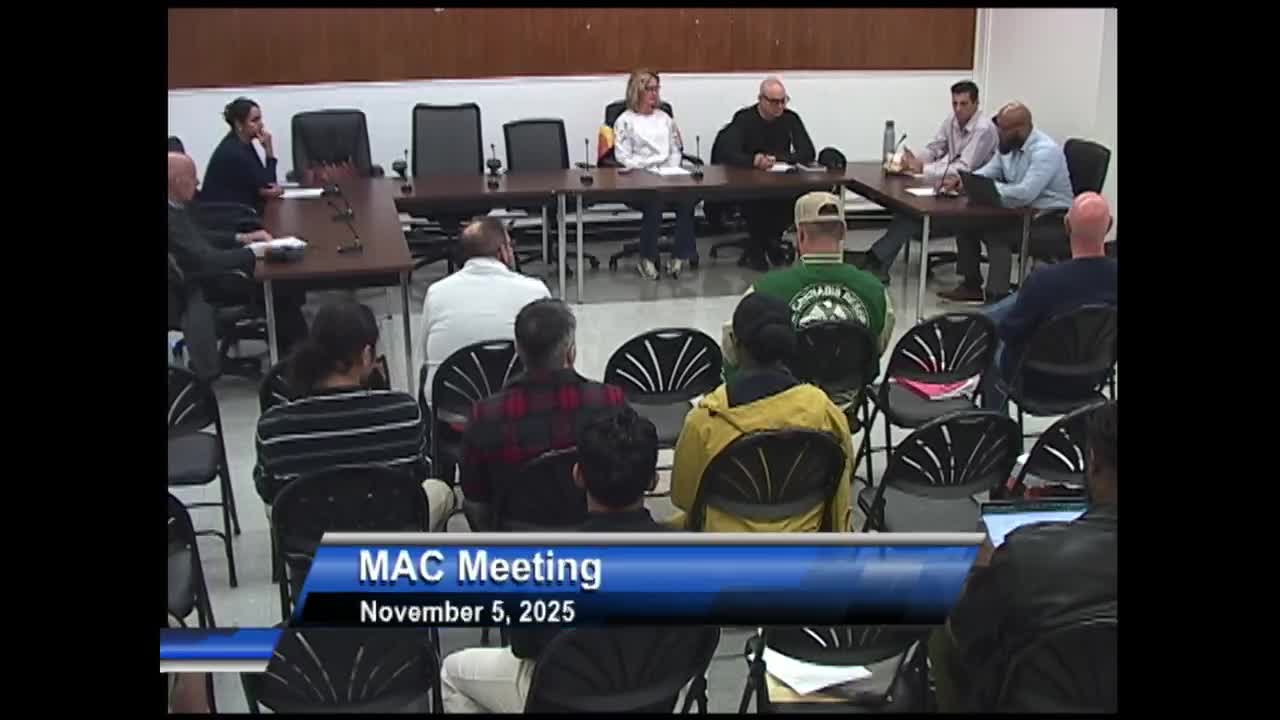New Rochelle arts commission approves a batch of commercial sign and awning applications
November 05, 2025 | New Rochelle, Westchester County, New York
This article was created by AI summarizing key points discussed. AI makes mistakes, so for full details and context, please refer to the video of the full meeting. Please report any errors so we can fix them. Report an error »

The New Rochelle Municipal Arts Commission approved a string of commercial sign and awning requests at its Nov. 5 meeting, granting applications to install or legalize storefront signs, awnings and wall art at several downtown and commercial properties.
Jane Walls, sitting in for Marissa Bowen, opened the series of adjourned and new cases. Aldar Nava of America Signs & Awnings, representing the owner of Taqueria el Chiltepin, described an existing painted mural at 149 North Avenue and said the proposed box awning would project 24 inches and cover the mural's central section. "The awning is the actual sign itself," Aldar Nava said while explaining design intent. The commission voted to approve both the awning installation and legalization of the painted wall artwork.
Michael Santalicuero of Sand Signs and Awnings presented applications for wall and pylon signage for 80 Nardozzi Place and a separate building now listed at 25 Industrial. He walked commissioners through front and rear elevations and dimensions, noting a front sign roughly 7 feet tall by 14–15 feet wide and a rear panel about 7 feet tall by 32 feet wide. "We've been in front of you with these two buildings several times," Santalicuero said as he provided photos of existing conditions. The commission approved those sign applications.
Other approvals on the consent track included:
- A legalization for an existing awning at 600 Davenport Avenue (VIP Country Club), which staff said is a side/rear entrance feature not visible from the roadway; the commission approved the legalization after applicant testimony.
- A sign legalization for 1082 Wilmot Road after the representative said the sign had been installed in 2018 and a recent violation prompted the application; staff noted the sign's letter height aligns with adjacent tenants and the commission approved legalization.
- A legalization for halo-lit channel letters at 15 New York Place; staff and the applicant discussed letter dimensions and cumulative row limits and the commission moved to approve the application.
Several other storefront sign and re-face applications — including replacements and pylon re-faces at shopping-park locations — were presented and approved after applicants provided elevations, color and mounting details. Where applications involved installed-but-unpermitted signs, applicants repeatedly described landlord approvals or prior contractor work as the reason for late legalization requests.
Most approvals were routine and passed on motions without extended debate. For a small set of cases (applications 182025 and 232025) applicants were not present at the second call and the commission adjourned those matters to a later meeting.
The commission closed the agenda of commercial signage items and moved on to administrative art proposals and artist certification requests.
Jane Walls, sitting in for Marissa Bowen, opened the series of adjourned and new cases. Aldar Nava of America Signs & Awnings, representing the owner of Taqueria el Chiltepin, described an existing painted mural at 149 North Avenue and said the proposed box awning would project 24 inches and cover the mural's central section. "The awning is the actual sign itself," Aldar Nava said while explaining design intent. The commission voted to approve both the awning installation and legalization of the painted wall artwork.
Michael Santalicuero of Sand Signs and Awnings presented applications for wall and pylon signage for 80 Nardozzi Place and a separate building now listed at 25 Industrial. He walked commissioners through front and rear elevations and dimensions, noting a front sign roughly 7 feet tall by 14–15 feet wide and a rear panel about 7 feet tall by 32 feet wide. "We've been in front of you with these two buildings several times," Santalicuero said as he provided photos of existing conditions. The commission approved those sign applications.
Other approvals on the consent track included:
- A legalization for an existing awning at 600 Davenport Avenue (VIP Country Club), which staff said is a side/rear entrance feature not visible from the roadway; the commission approved the legalization after applicant testimony.
- A sign legalization for 1082 Wilmot Road after the representative said the sign had been installed in 2018 and a recent violation prompted the application; staff noted the sign's letter height aligns with adjacent tenants and the commission approved legalization.
- A legalization for halo-lit channel letters at 15 New York Place; staff and the applicant discussed letter dimensions and cumulative row limits and the commission moved to approve the application.
Several other storefront sign and re-face applications — including replacements and pylon re-faces at shopping-park locations — were presented and approved after applicants provided elevations, color and mounting details. Where applications involved installed-but-unpermitted signs, applicants repeatedly described landlord approvals or prior contractor work as the reason for late legalization requests.
Most approvals were routine and passed on motions without extended debate. For a small set of cases (applications 182025 and 232025) applicants were not present at the second call and the commission adjourned those matters to a later meeting.
The commission closed the agenda of commercial signage items and moved on to administrative art proposals and artist certification requests.
View full meeting
This article is based on a recent meeting—watch the full video and explore the complete transcript for deeper insights into the discussion.
View full meeting
